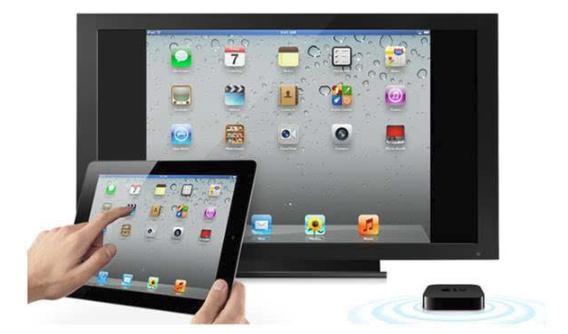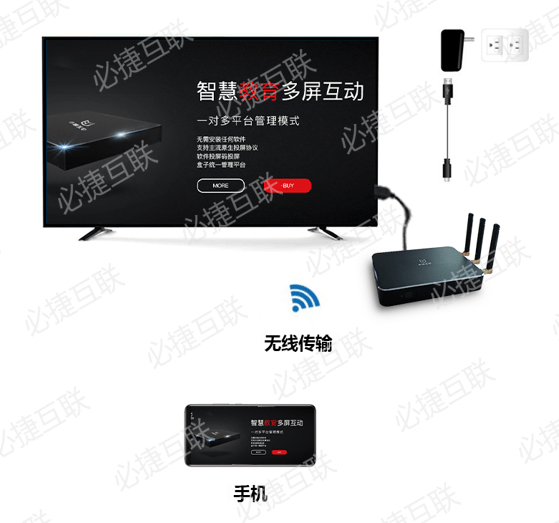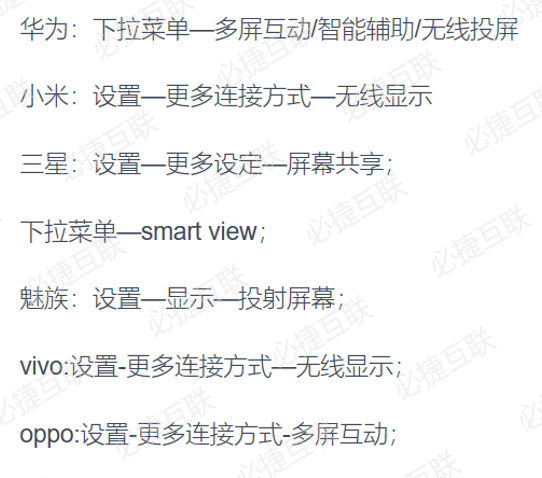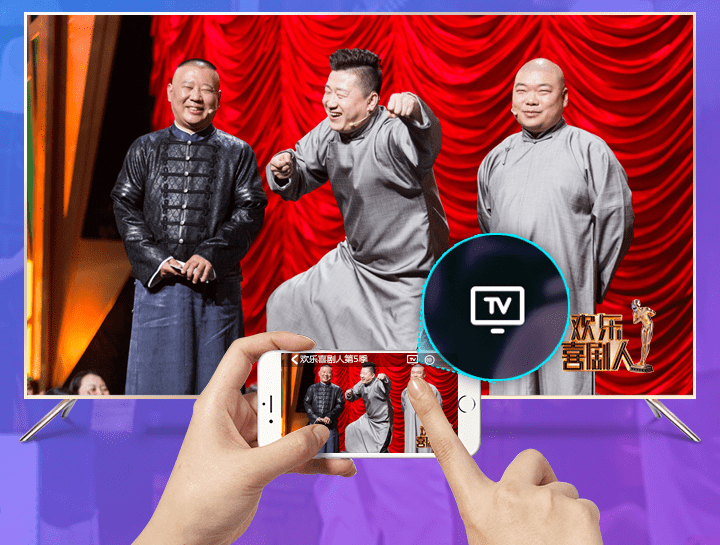In addition to the further research and development of wireless screen projection technology by the screen projection solution supplier, there are three kinds of screen projection protocols provided by mobile terminals at the beginning, namely airplay, miracast and dlan. Mobile terminals of different brands or operating systems support corresponding screen projection protocols. Different protocols have different characteristics. Let’s compare and analyze them.
[airplay]
airplay is a wireless technology developed by apple, which can wirelessly transmit pictures, audio and video on IOS devices such as iPhone, iPad and iPod touch to airplay supporting devices through WiFi. Apple TV, which costs $99, has such a function. Now some traditional home cinemas and online players already support the airplay function.

airplay supports the image function, and the pictures on iPhone or iPad can be wirelessly projected onto TVs that support airplay protocol, that is, what the mobile terminal displays on the large TV screen. The image function of airplay is supported by dlan.
and
at present, Apple’s airplay is only applicable to certified Apple devices. At present, Apple’s own devices mainly support this technology, including iPad, iPhone, Apple TV, etc., and the devices of some Apple authorized partners also support the airplay protocol.
condition: Apple device and TV are in the same LAN. Advantages of
and
: wireless screen projection; The native projection protocol of Apple device has strong anti-interference and supports screen mirroring. The image effect of airplay is the best of all projection methods. Deficiency of
and
: airplay is the native projection protocol of IOS system, and its scope of use is generally limited to Apple devices. Although the airplay projection protocol has been compatible with a small number of projection devices in the market, it is still not compatible with most projection devices in the market.
[miracast]
miracast is a wireless screen projection protocol based on WiFi direct connection, which was formulated by Wi Fi alliance in 2012. Devices that support this protocol can share video images through projection. For example, on the basis that both mobile phones and TV support miracast protocol, movies or photos on mobile phones can be played directly on TV through miracast protocol, which is not limited by connecting cables.

unlike DLNA, miracast also has a mirror function similar to airplay, which can directly put the screen content in the mobile phone into the HD TV screen. Android4. After version 2, the system is equipped with this protocol as standard (it can be found in the setting or display menu, application names such as WLAN display, WiFi display, miracast, allshare cast, mirroring screen, wireless display, etc., and different mobile phone brands have different names). The screen content of mobile terminal can be wirelessly projected onto large screen display devices through wireless projection receiver, such as living room TV, conference room projector, etc. The transmission delay of the projection screen using miracast protocol is less than 150ms. This protocol requires the assistance of wireless screen projection receiver to complete the screen projection operation.

wireless display,airplay,googlecast,miracst
conditions: the mobile phone and TV need to support miracast projection protocol, and the mobile phone and TV are in the same LAN; The miracast setting of the TV is on. Advantages of
and
: wireless screen projection; It is the most compatible projection protocol. Most mobile phones and smart TVs in China support miracast projection protocol. Insufficient
and
: some TVs cannot adjust the image mode, and the color difference between mobile phone picture and TV picture is obvious.
[DLNA]
DNLA, digital living network alliance, is a set of interconnection protocols among PCs, mobile devices and consumer appliances initiated by Sony, Intel and Microsoft. Their mission is to “enjoy music, photos and videos anytime, anywhere”.
and
DLNA are similar to Apple’s airplay. They can put the media content in your mobile phone into the TV screen. The difference is that the DLNA on the mobile phone does not have a projection image function similar to airplay or miracast. At present, DLNA only supports sending photos and videos of mobile phones to the large screen.

in addition, online videos can also be pushed to the living room TV in DLNA mode. Some players of Android system have DLNA function. At present, video clients that support wireless push include the following: Tencent video, Sohu Video and pptv video, which can send videos from the original mobile phone screen to the TV screen. If the TV or TV box supports DLNA. There may be a variety of encoding formats for dlspe Na files, which may be different from those for dlspar Na files. Usually, for a better playback experience, DLNA will cache for a short period of time.
miracast is real-time. It can transmit the output of the source in real time. The operation of any screen on the source side will be transmitted to the sink side. If the source side plays media files, the source side is responsible for decoding the media files first, and then encoding them into H.264 format. The receiver only needs to decode H.264. Therefore, compared with DLNA, miracast has higher requirements for WiFi channel.
and
conditions: the mobile phone and TV need to support DLNA projection protocol, and the mobile phone and TV are in the same LAN; The DLNA setting of the TV is on.
and
advantages: wireless push; Online video push works best.
and
are insufficient: only online videos can be pushed; You need to turn on the TV projection device first, and then start the DLNA related applications on the mobile phone, so as to identify the TV device on the mobile phone.
online consultation categories: technology blog news center